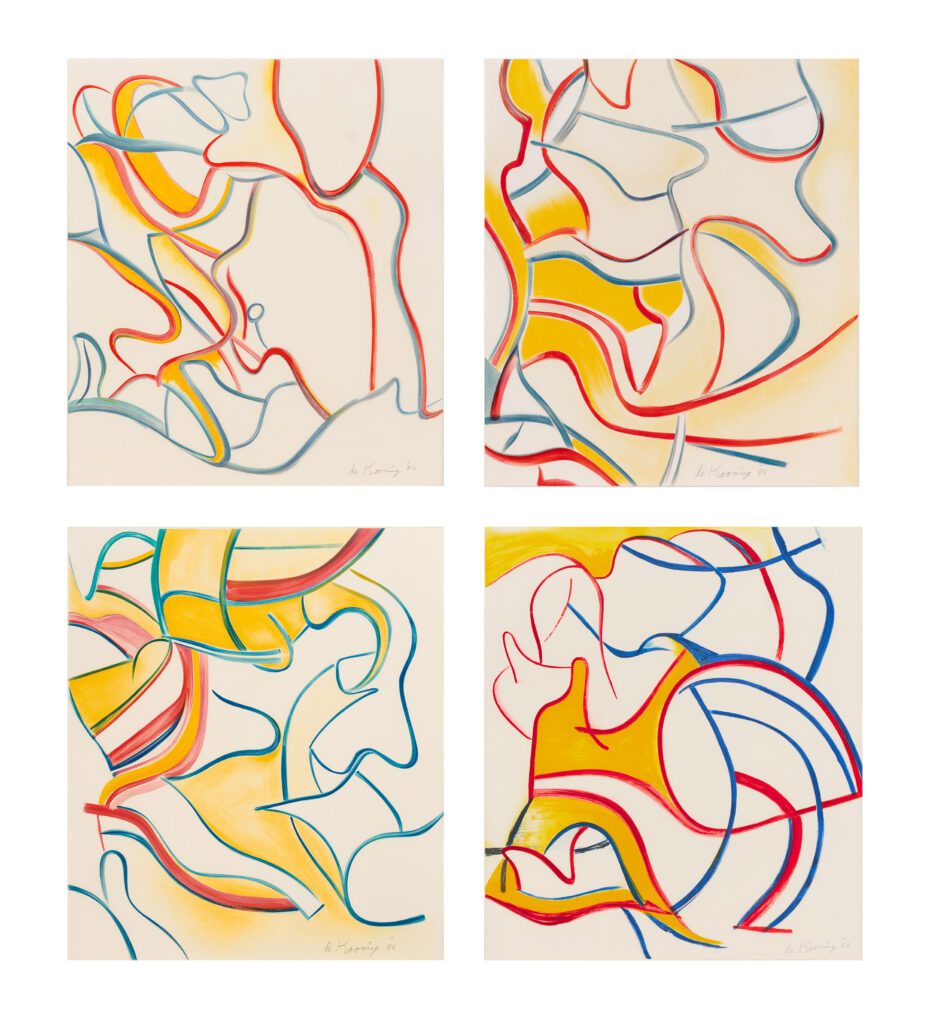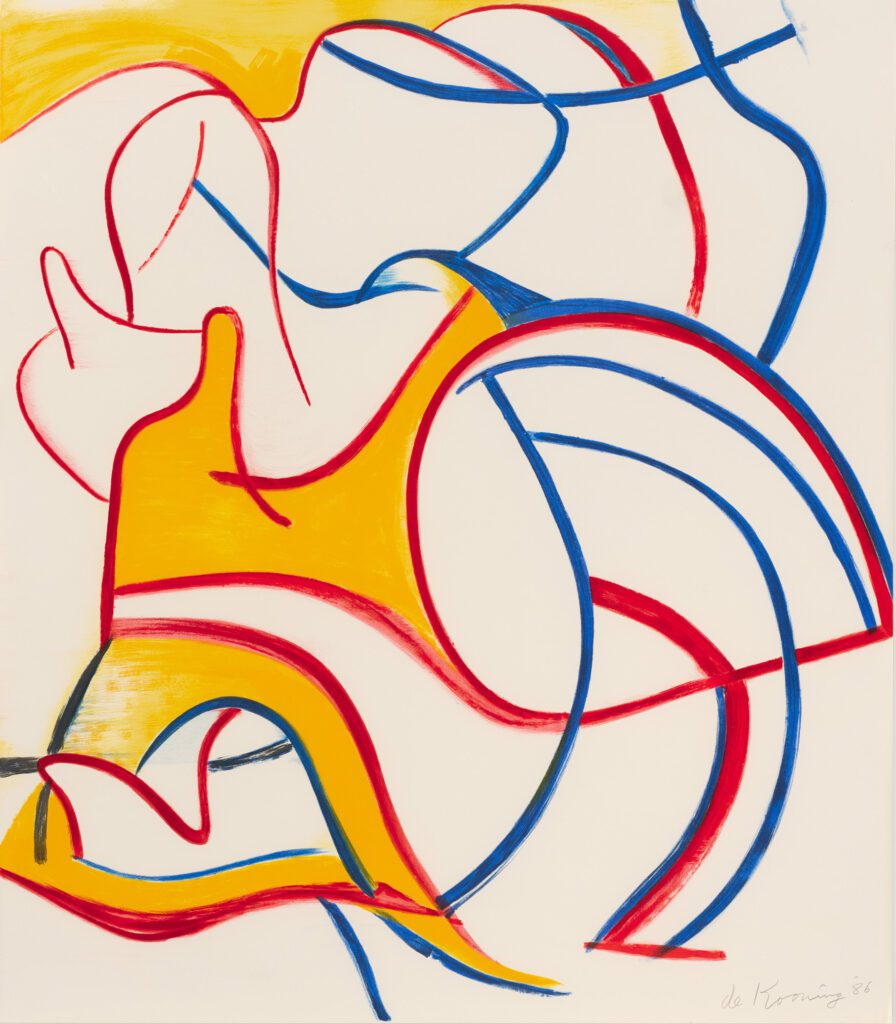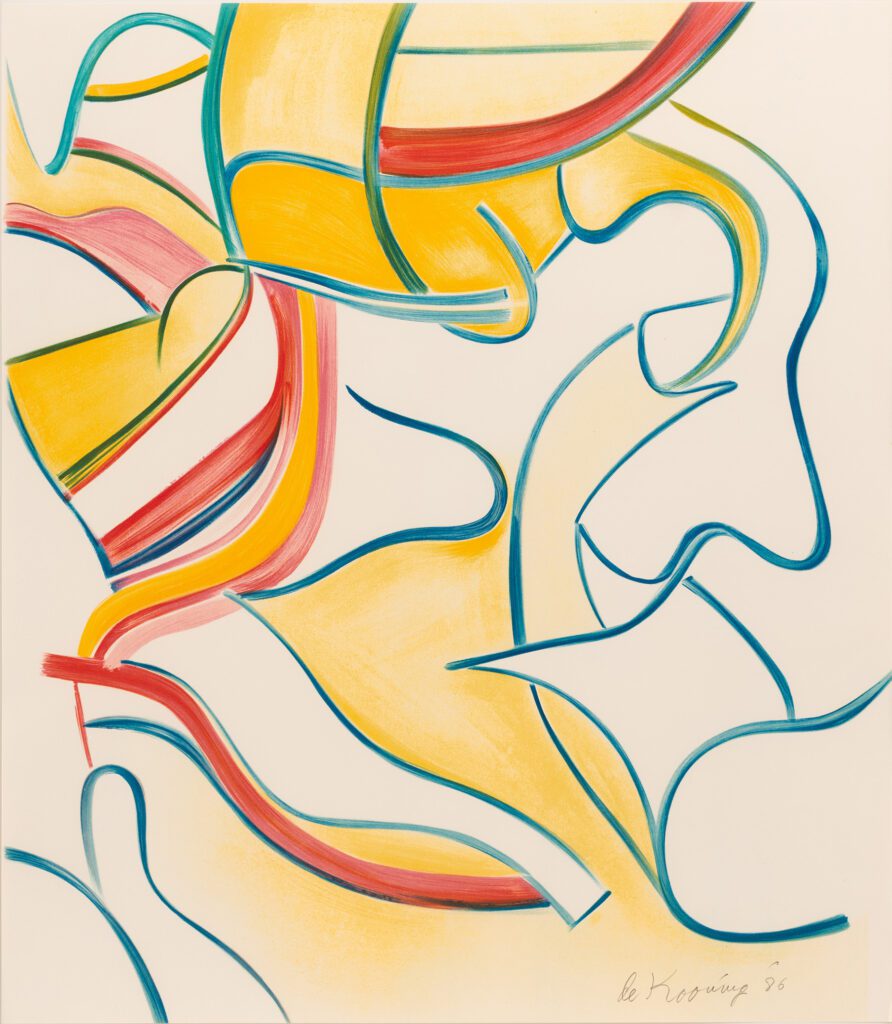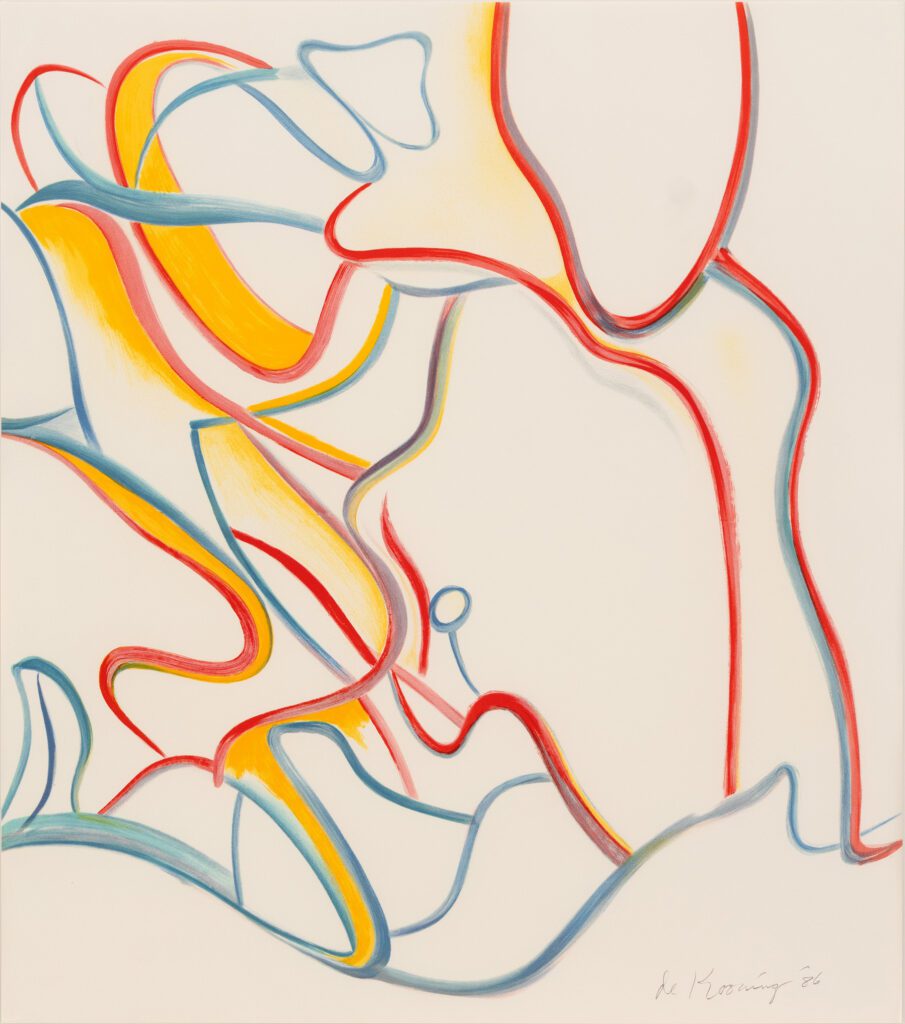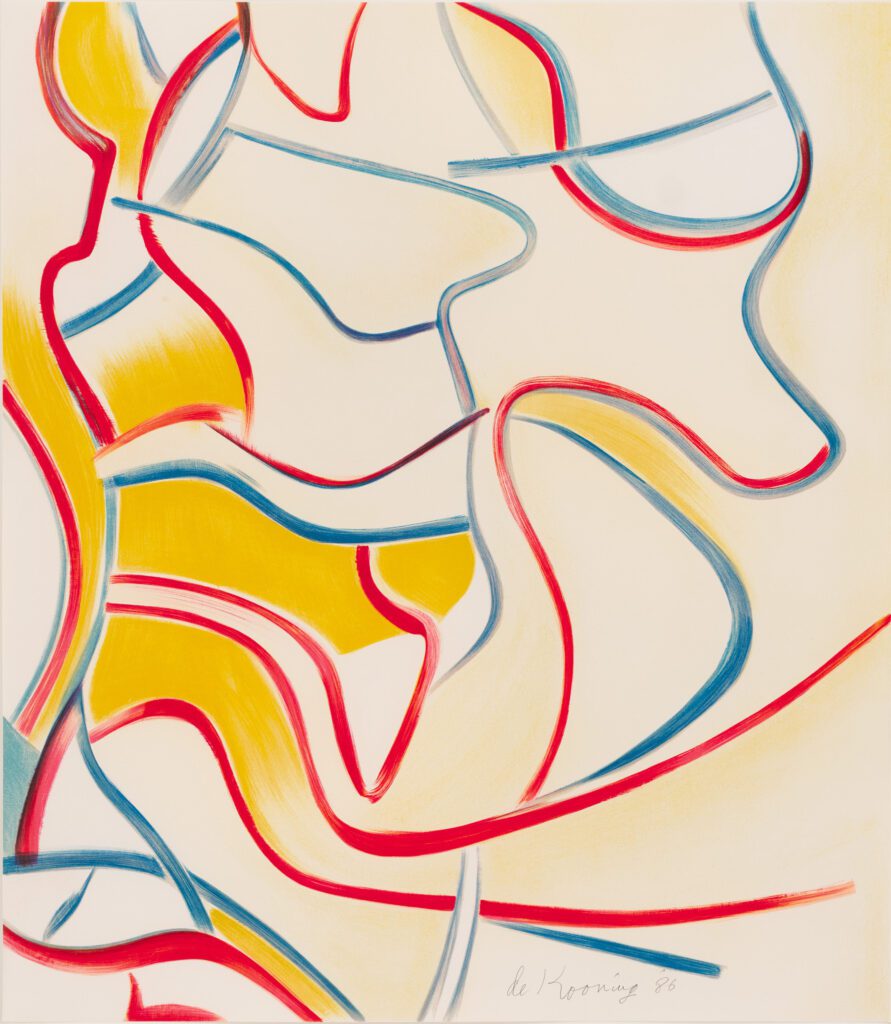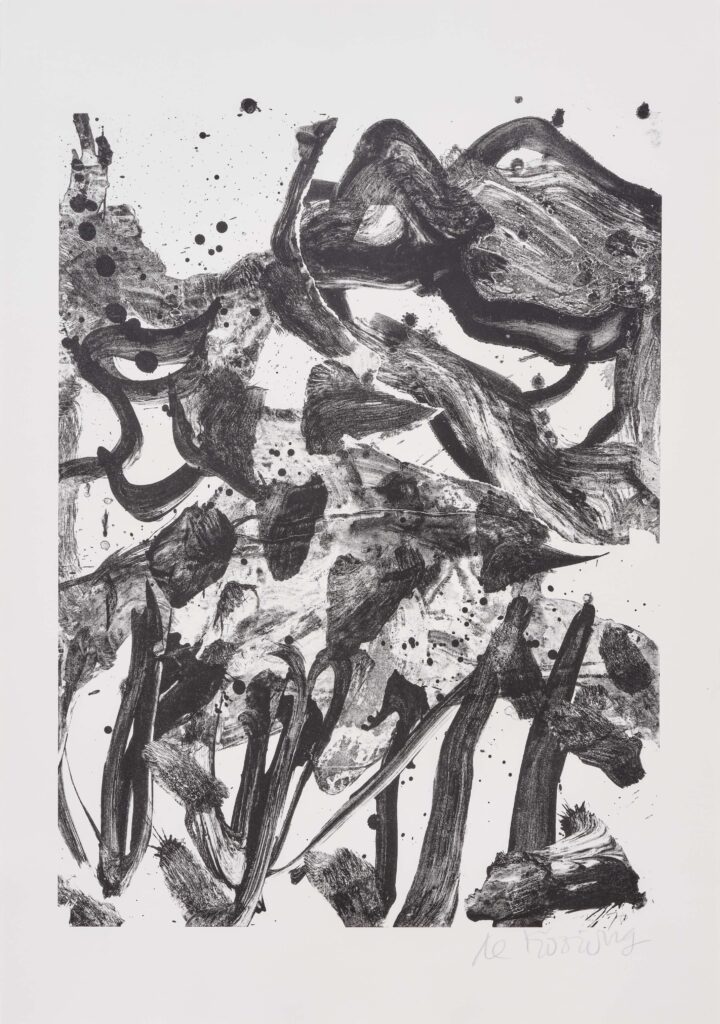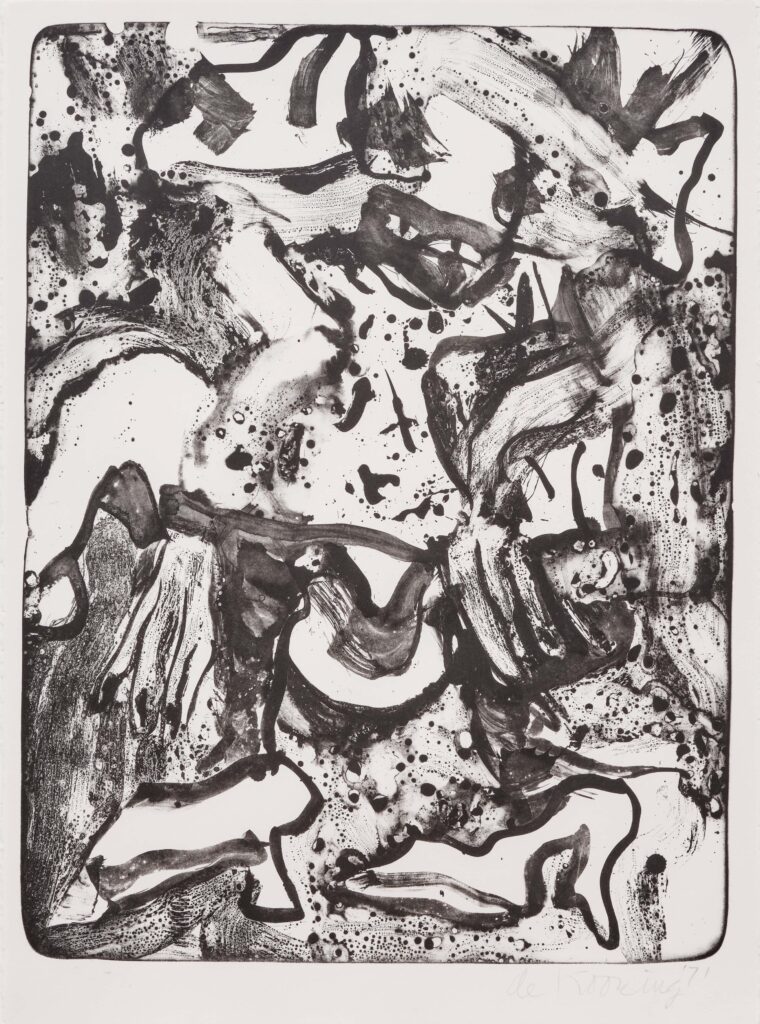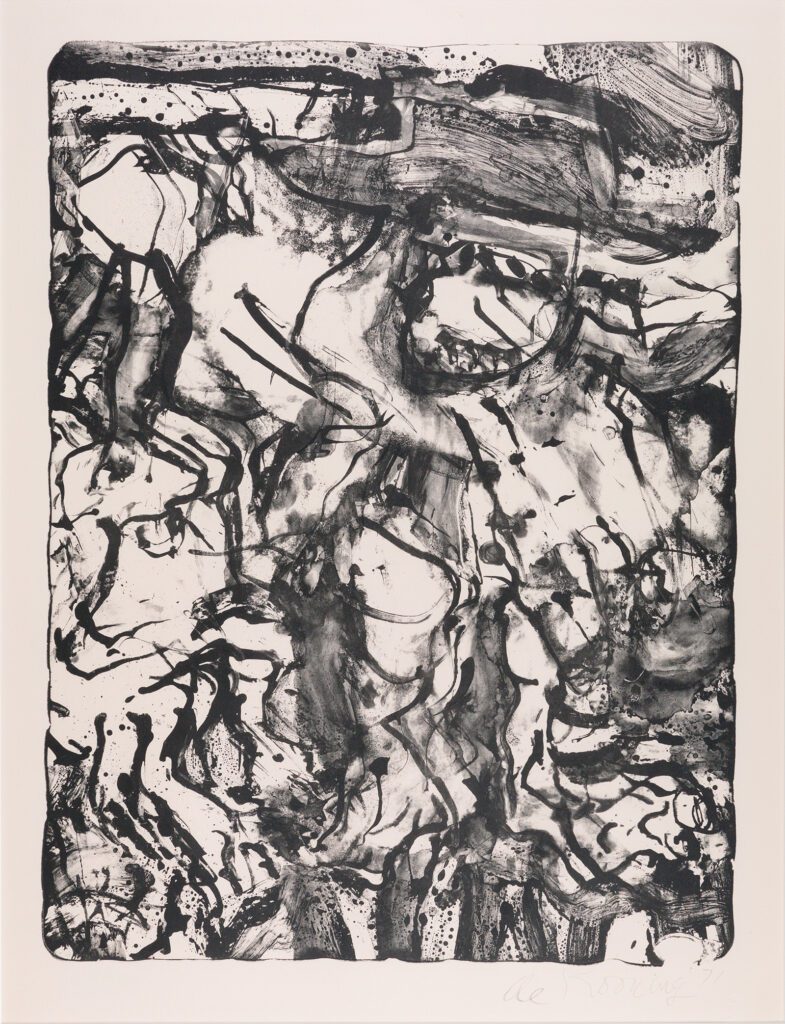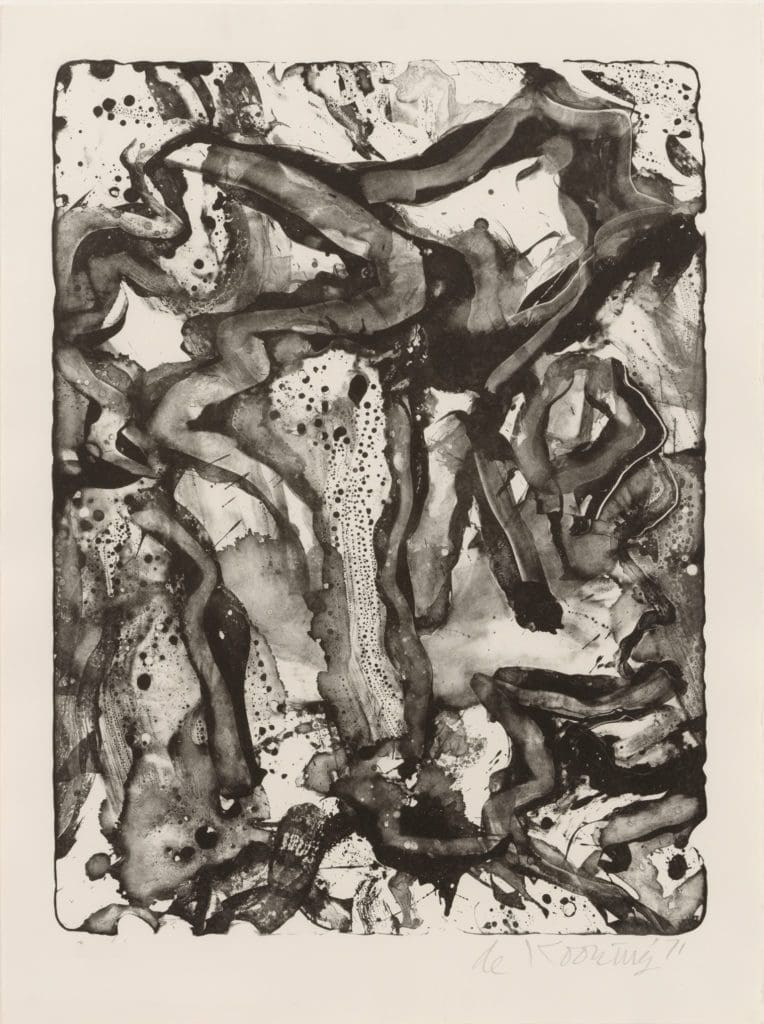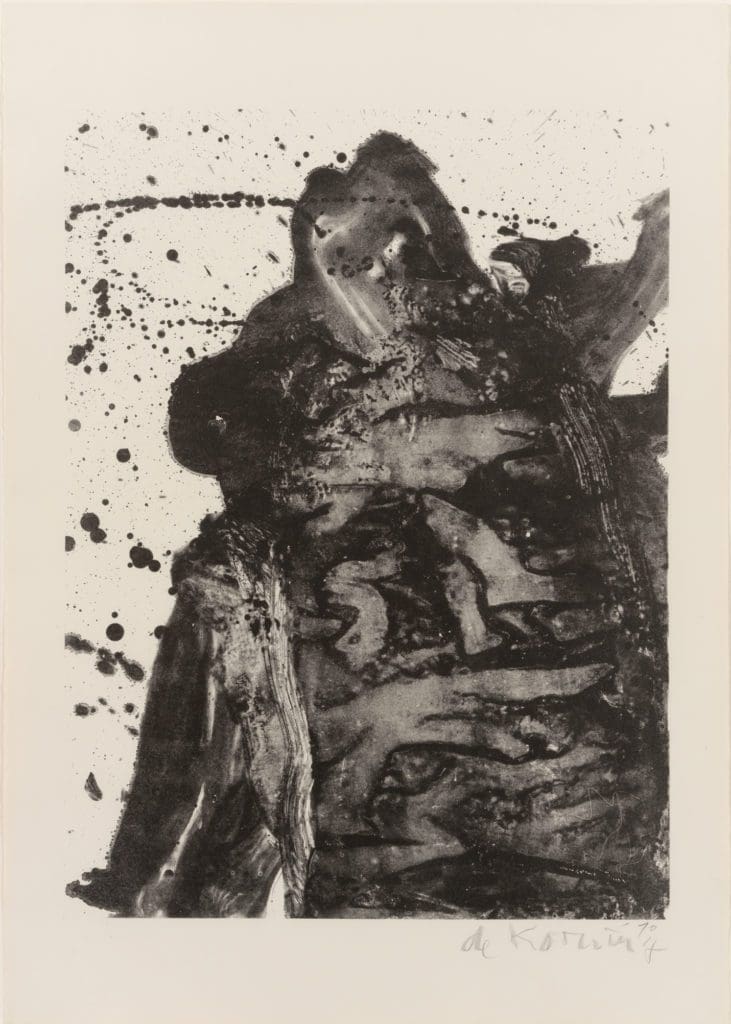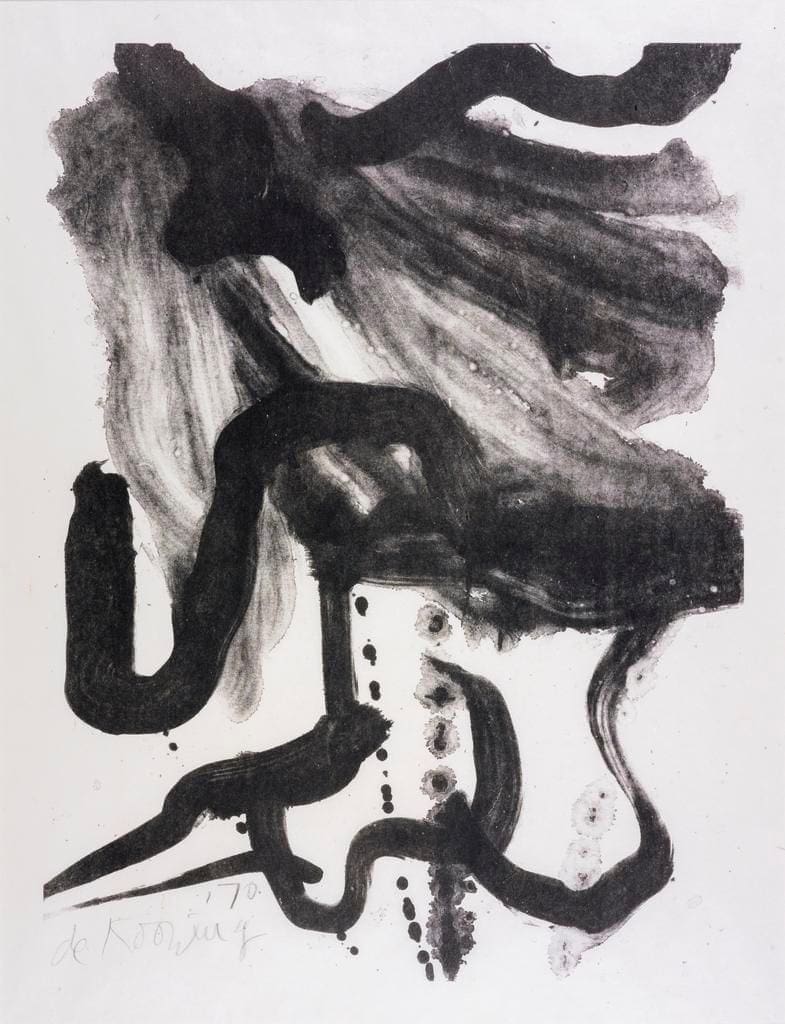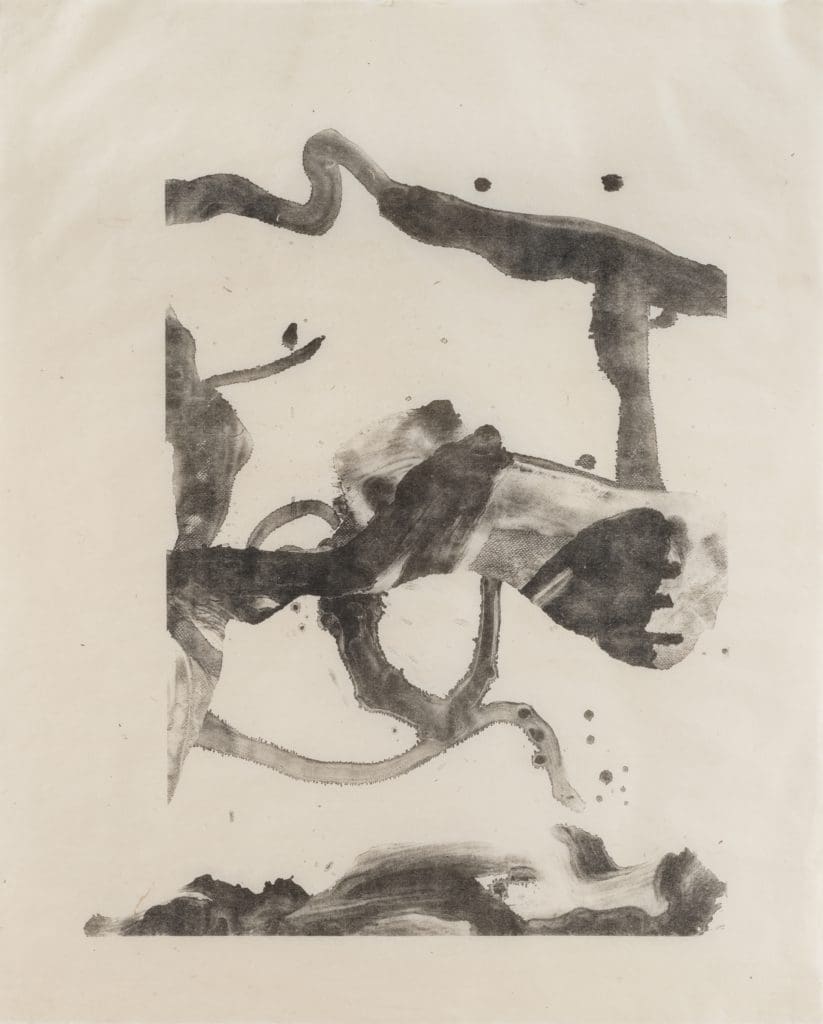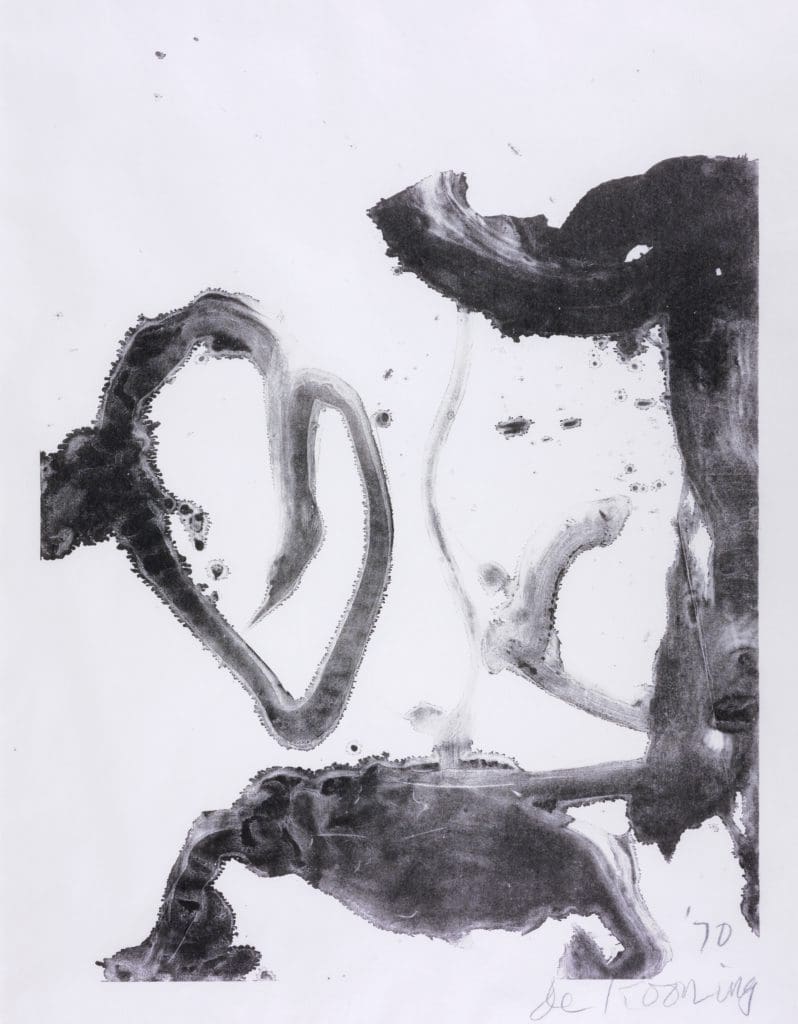Willem de Kooning
-
 Untitled (Quatre Lithographies)
Untitled (Quatre Lithographies) -
 Untitled (from the Quatre Lithographies series)
Untitled (from the Quatre Lithographies series) -
 Untitled (from the Quatre Lithographies series)
Untitled (from the Quatre Lithographies series) -
 Untitled (from the Quatre Lithographies series)
Untitled (from the Quatre Lithographies series) -
 Untitled (from the Quatre Lithographies series)
Untitled (from the Quatre Lithographies series) -
 The Marshes
The Marshes -
 Minnie Mouse
Minnie Mouse -
 The Preacher
The Preacher -
 Landscape at Stanton Street
Landscape at Stanton Street -
 Big
Big -
 Woman with Corset and Long Hair
Woman with Corset and Long Hair -
 Souvenir of Montauk
Souvenir of Montauk -
 Valentine
Valentine
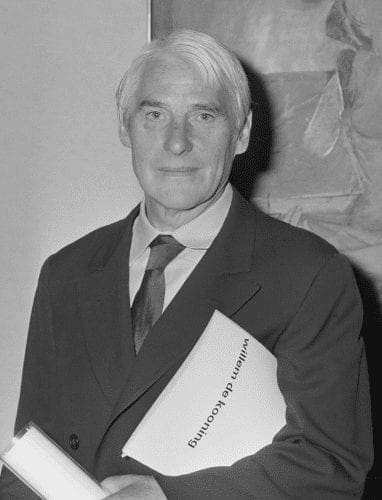
About Willem de Kooning
Willem de Kooning was born in 1904, in Rotterdam. From 1916 to 1925, he studied at night at the Academie voor Beeldende Kunsten en Technische Wetenschappen, Rotterdam. De Kooning came to the United States in 1926 and settled briefly in Hoboken, New Jersey, where he worked as a house painter before moving to New York in 1927. In the late 1930s, de Kooning was primarily influenced by Pablo Picasso’s Cubist and Surrealist periods. He started his first of many series of paintings of women in 1938. During the 1940s he participated in group shows with his contemporaries, who would form the New York School and come to be known as Abstract Expressionists. De Kooning’s first solo show, which took place at the Egan Gallery, New York, in 1948, established his reputation. It included a number of allover black-and-white abstract paintings he had initiated in 1946. In the early 1950s, de Kooning began another Women series, followed by abstract urban landscapes, parkways, rural landscapes, and, in the 1960s, a new group of Women . Following a period of travel, he executed his first sculptures in 1969, and began a series of life-size figures in 1970. This year also marked de Kooning’s most generative period of printmaking, a medium he had experimented with at various points in his career since 1946. Throughout the 1970s de Kooning received numerous major exhibitions and accolades, including an exhibition organized by the Walker Art Center, Minneapolis that traveled throughout the United States, and an exhibition at the Museum of Art, Carnegie Institute, Pittsburgh following his receipt of the Andrew W. Mellon Prize in 1979. De Kooning settled in Springs, East Hampton, Long Island, in 1963. Following his death in 1997, he was honored with a retrospective at the Museum of Modern Art, New York (1997).


